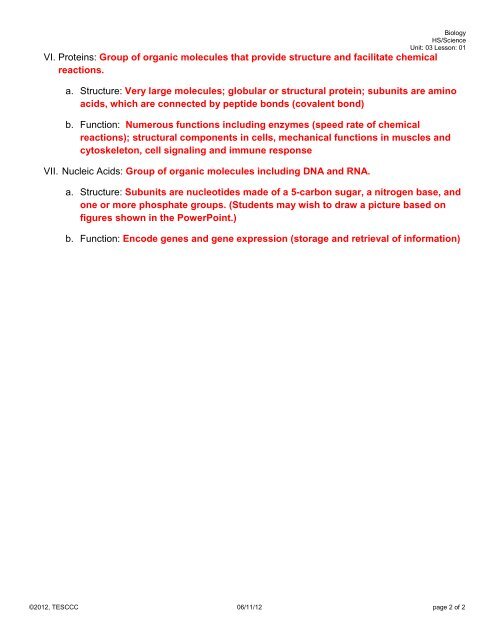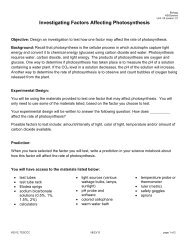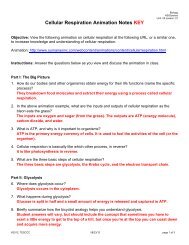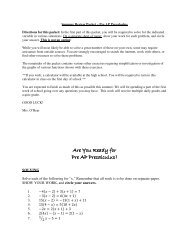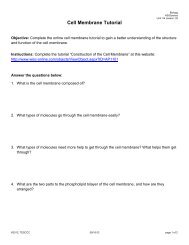Biomolecule Discussion Guide KEY
Biomolecule Discussion Guide KEY
Biomolecule Discussion Guide KEY
You also want an ePaper? Increase the reach of your titles
YUMPU automatically turns print PDFs into web optimized ePapers that Google loves.
VI. Proteins: Group of organic molecules that provide structure and facilitate chemical<br />
reactions.<br />
Biology<br />
HS/Science<br />
Unit: 03 Lesson: 01<br />
a. Structure: Very large molecules; globular or structural protein; subunits are amino<br />
acids, which are connected by peptide bonds (covalent bond)<br />
b. Function: Numerous functions including enzymes (speed rate of chemical<br />
reactions); structural components in cells, mechanical functions in muscles and<br />
cytoskeleton, cell signaling and immune response<br />
VII. Nucleic Acids: Group of organic molecules including DNA and RNA.<br />
a. Structure: Subunits are nucleotides made of a 5-carbon sugar, a nitrogen base, and<br />
one or more phosphate groups. (Students may wish to draw a picture based on<br />
figures shown in the PowerPoint.)<br />
b. Function: Encode genes and gene expression (storage and retrieval of information)<br />
©2012, TESCCC 06/11/12 page 2 of 2


